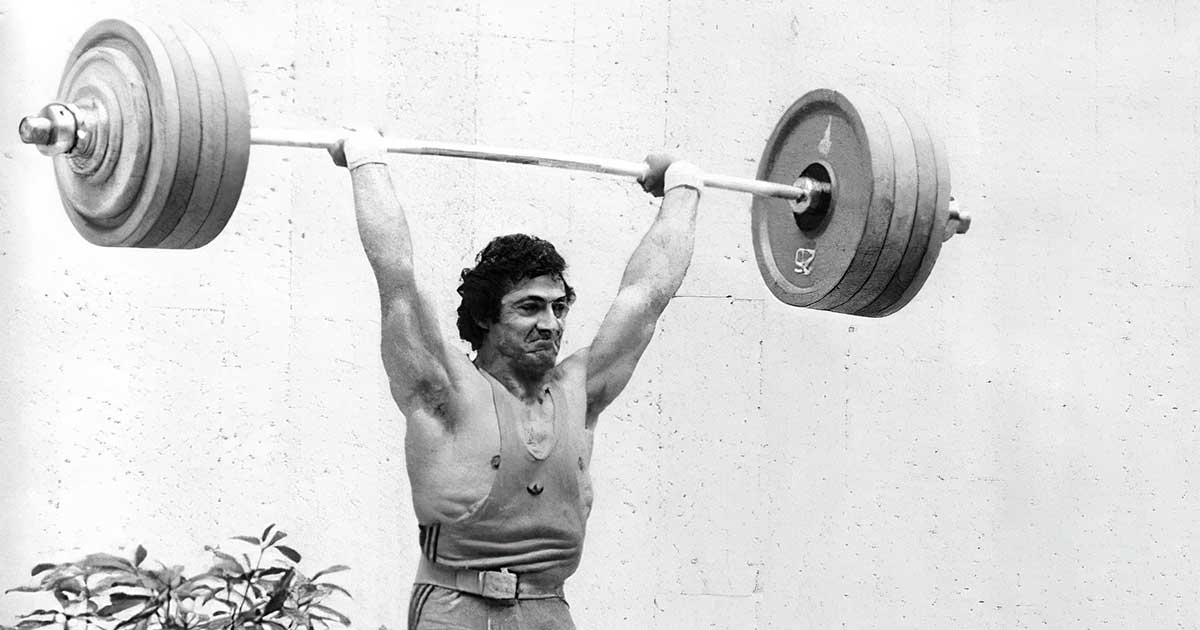Training To Failure Frequency
Maxium Strength is effectively developed when an exercise is
InFrequetntly trained to failure during a Training Periodization Cycle.
Think of a Training Periodization Cycle as Warm Up Sets/Weels that perpare you for your Top Workout Set; Final Training Week in this example.
4 Week Periodization Training Cycle Example
1) Week 1: This is Warm Up Week/Set 1. The load needs to be light and easy.
2) Week 2: This is the Second Warm Up Week/Set 2. It is slightly heavier than your first Set/Week but still easy.
3) Week 3: This is your Third Warm Up Week/Set 3. This is a moderately heavier load than the previous week. In this scenario, it last of the Warm Up Weeks/Sets before your finaly Top Week/Set.
4) Week 4: This the week that you are all in. The exercise load/instenstiy is pushed to the limit of failrue or close to it. The determinate factor of if you push it to failure or how close you go to it depends on you mental drive.
Pushing yourself to failure in the final week, fully innervates the development of Maxium Strength. It elicits...
OverReaching
OverReaching means you have slightly OverTrained.
Once OverReaching has been achieved in the final Training Periodization Cycle a New Cycle is begun.
Continuing to push a Training Program once OverReaching has taken place, leads to OverTraining.
"Wound Healing"
OverReaching produces low to moderate trauma to the body.
OverTraining produces much greater trauma to the body.
"Wound Healing" means the less trauma placed on the body, the faster it recovers; which is what OverReading is.
Pushing youself into OverTraining, produces greater trauma to the body. The body take longer to recover.
Metaphorically speaking, OverReaching would be like having a common cold and pushing too far into OverTraining would be like having something like Covid.
With that said, let look at the misconception of...
DeLoad and ReLoad
One of the misconceptions of this approach is once OverReaching occurs and progress stops or goes backwards, individuals "DeLoad" for one or two workouts and then "ReLoad" to the previous poundage they were using.
This is a short term, short sited approach to making progress. More Recovery Time is required for increases in strength and/or size dependent on the Training Program.
With that in mind, the optimal approach is a...
New Training Periodization Cycle
The New Training Periodization Cycle means starting over with light, easy load with the exercise you were using or using new exercises,
Doing so, promotes...
Active Recovery
Starting over with light easy loads in the New Training Cycle promotes recovery. Recovery is where increase in strength and/or size occur.
The same Training Periodization Cycle is applied as noted above.
Each week, the load/intensity is progressively increase. The final week being pushed to failure or very close to it.
This cyclical training approach complies with...
The General Adapation Syndrome
This is the foundaiton of a well written and excuted Training Program.
There are three stages to it.
1) Alarm Stage
The Alarm Stage of training is similar to getting some type of vaccine shot.
It reacts to a vaccine shot by increasing antibodies.
In a Training Program. the same survival mechanism occurs; an increase in strength and/or size take place.
2) Resistance Stage
The Resistance Stage response to a vaccine shot is the increase of antibodies that conquers the infection.
The same is true in with the Resistance Stage of a Training Program; the body becomes stronger.
Thus, there is some validity to, "What doesn't kill you, makes you stronger".
3) Exhaustion Stage
This stage need to be avoided.
In training it occurs when you have pushed past OverReaching and into OverTraining. Continuing to drive deeper into OverTraining lead to a longer recovery period.
Summary
1) Training To Failure
This is an effetive method of increasing strength and/or size
when it is limited to the final week of training.
Going to failure every training session is contraindicated. It eventually lead to OverTraining; going backward.
As someone once said,
“Stimulate, don't annihilate.”
2) Technique Devlopment Training Movements
Training To Failure is contraindicated for Movement in which the obective is to Develope Technique.
With each Repetition in a Movement, Muscle Fatigue occurs. Technique is altered. Poor Technique is developed.
3) Auxiliary Exercises
Reseach (Dr Tom McLaughlin, PhD Biomechnaics/former Powerlifter) and Anecdotal Data (over 40 years of the Westside Powerlifting Method and decades of the Olympic Lifter Training Protocol) have demonstrated the the most effective method of ensuring Maximum Strength is achieved/maintained is with Auxiliary Exercise that are similar in nature to the Technical Movment.
Rescemt research on this was just published that demonstrated this, as well.
Transfer Between Lifts: Increased Strength in Untrained Exercises
Strength and Conditioning Journal:
June 2022 - Volume 44 - Issue 3 - p 101-106
ABSTRACT
The principle of specificity confers that physiological adaptations to exercise reflect the specific stimuli applied during an exercise training program. When applied to resistance training (RT), the principle of specificity implies that the acquisition of strength, which is often measured as a 1 repetition maximum, is specific to several variables of an RT program such as intensity, contraction type, and motor pattern.
Although the principle of specificity holds true, a phenomenon called “transfer” also occurs when a lifter increases their strength in an exercise that they did not train. For example, if a lifter performed lunges in lieu of back squat, but their back squat strength increased anyway, there would be transfer between the lunge and back squat. This column summarizes recent research that reported transfer between bilateral exercises, unilateral to bilateral exercises, and single-joint to multiple-joint exercises and provides several recommendations for practical applications along the way.
...Multi Joint exercises were a more efficient option for increasing maximal strength...
...They compared the effect of kettlebell swings to explosive DL (maximal effort with 30% of 1RM) in resistance-trained men (.1 year). After 4 weeks, both groups significantly increased their maximal DL strength.
..."It is notable that merely 8 sessions of kettlebell swing increased DL 1RM by 8 kg, meaning that SCSs (Strength and Conditioning Specialist) can cycle through both exercises and prescribe training blocks that use kettlebell swings as a primary hip hinge pattern (14)
Barbell - Powerlifting noob? Post 5

 Even if we are talking slow twitch training, in my mind, slow or not, failure is failure...
Even if we are talking slow twitch training, in my mind, slow or not, failure is failure...

